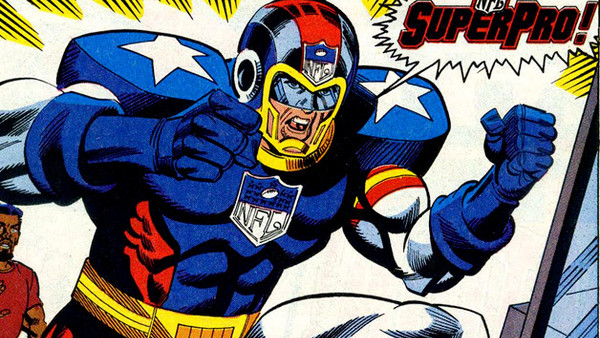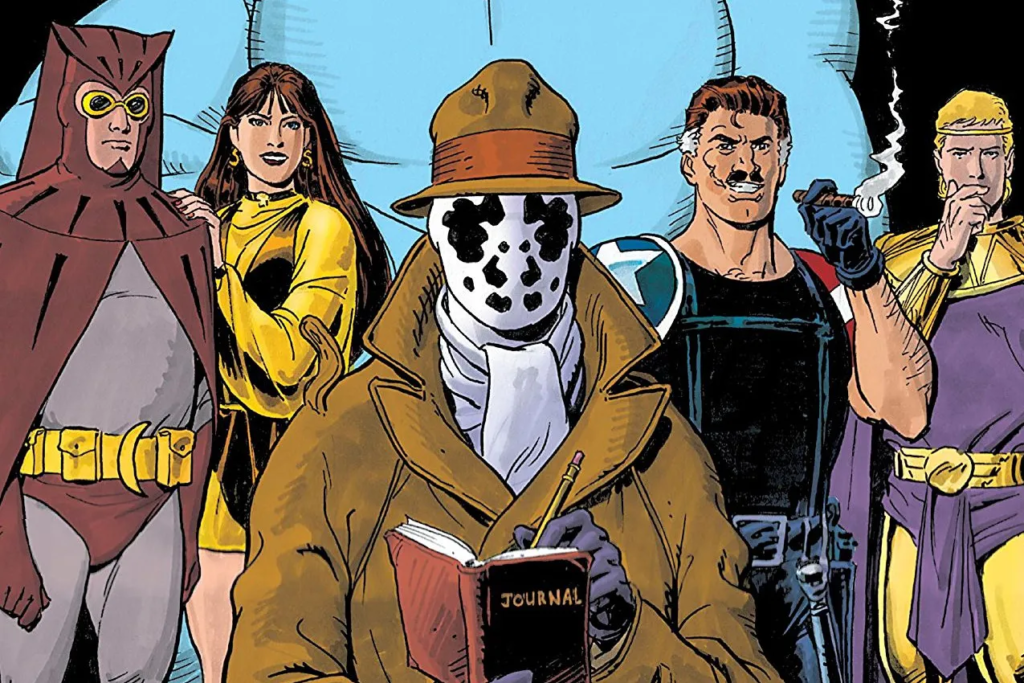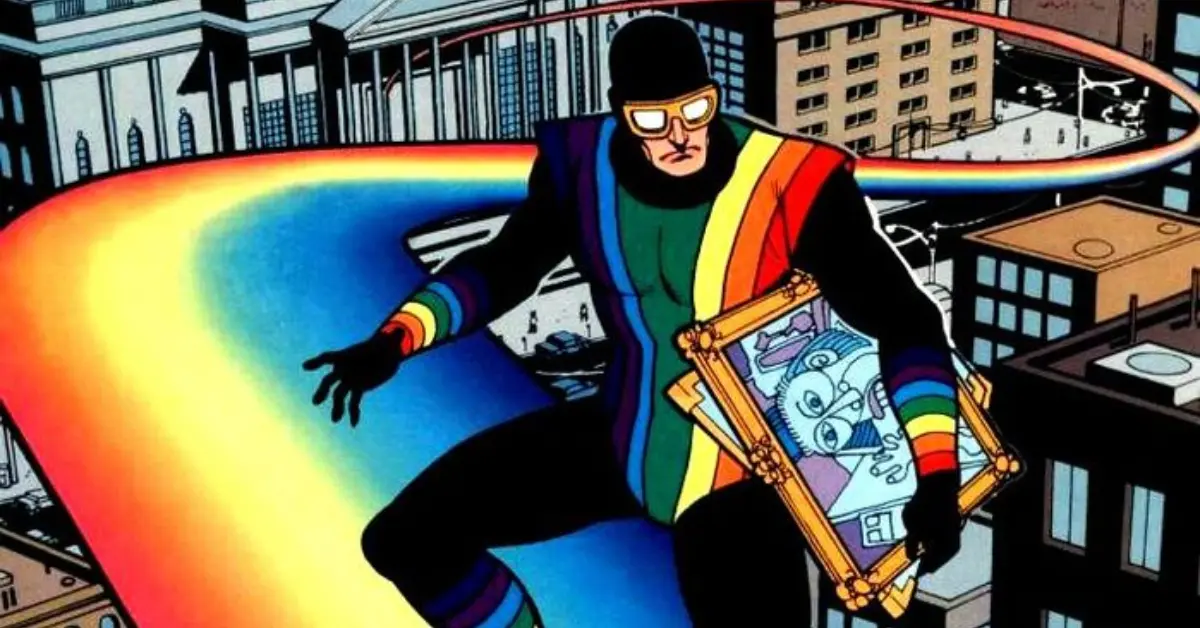In the vast multiverse of Marvel Comics, there’s no shortage of iconic, beloved, or at least interesting characters. From cosmic gods to street-level vigilantes, the Marvel Universe has something for everyone — and then there’s NFL SuperPro, a character who defies explanation and logic. Born from an unholy alliance between comic books and corporate marketing, NFL SuperPro is widely regarded as one of Marvel’s worst and most bizarre heroes. His short-lived series is a cautionary tale of what happens when creativity is sidelined in favor of branding — and how sometimes, even superheroes can’t save a bad idea.

NFL SuperPro, aka Phil Grayfield, made his debut in NFL SuperPro #1 in 1991, a time when the comic industry was experimenting with cross-promotional ventures — often with cringeworthy results. Phil is a former pro football player who, after a career-ending knee injury, becomes a sports reporter. While on assignment, he interviews a reclusive superfan scientist who’s developed a nearly indestructible football uniform. Predictably, things go sideways when thieves try to steal the suit, a fire breaks out, and Phil ends up doused in a mix of chemical fumes and experimental materials — all while wearing the high-tech football gear.
Instead of dying a horrible death (as any normal human should in this scenario), Phil emerges as NFL SuperPro, a superpowered symbol of American football, equipped with the strength, durability, and spirit of the game itself. His mission? To fight crime and protect the values of football across the land.
Yes, it’s as dumb as it sounds.
The biggest issue with NFL SuperPro — aside from the absurd origin and over-the-top design — was that he felt less like a character and more like a walking, talking advertisement. The entire comic line was a tie-in with the National Football League, complete with the official NFL logo plastered on the suit and frequent references to real teams and players. It wasn’t just marketing — it was blatant marketing.
The writing didn’t help either. NFL SuperPro’s comic run lasted only 12 issues, and it’s clear that Marvel wasn’t putting its A-team on the project. The stories were bland, the villains laughable (including a criminal quarterback named Quick Kick and a time-traveling Roman gladiator), and the dialogue was cheesy even by early ’90s standards. Attempts to inject social commentary — such as a notorious issue addressing Native American stereotypes — only made things worse, showing a complete lack of sensitivity and understanding.
The character’s powers were never clearly defined, either. He’s “super durable” and “strong,” but only vaguely so. Can he lift a car? Shrug off bullets? Who knows? It didn’t really matter, because the focus was never on compelling action or deep character work. It was about keeping the NFL logo front and center.
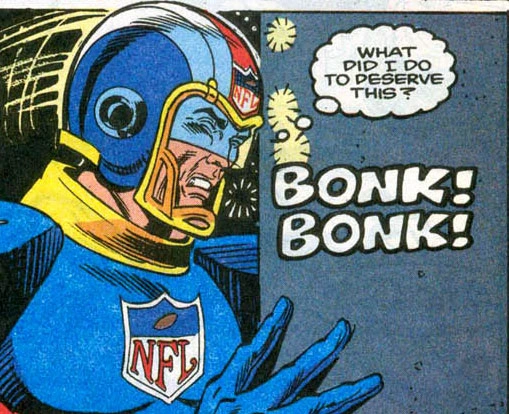
Given his fleeting presence in comics, NFL SuperPro never made it big in other media — which, in hindsight, is probably a blessing. He has not appeared in any major Marvel video games, TV shows, or movies, and he’s been completely absent from major crossover events. While characters like Squirrel Girl and Howard the Duck have enjoyed ironic cult followings and occasional reboots, NFL SuperPro remains stuck in the bargain bin of Marvel history.
That said, he’s not entirely forgotten. NFL SuperPro has made minor cameos in various Marvel references and Easter eggs. He’s been the butt of jokes in comic fandom for decades and is often cited in “worst superheroes ever” lists. For collectors, original issues of NFL SuperPro have become something of a novelty item — not for value, but for sheer absurdity. It’s the kind of comic you give as a gag gift to your football-loving friend who doesn’t read comics, or to someone who needs to understand that yes, it really can get worse than the worst ideas from the ’90s.
While NFL SuperPro is a punchline today, he’s also an artifact of a specific moment in comic history — when companies tried desperately to monetize their IP through corporate sponsorships and gimmicks. He serves as a reminder of the thin line between creative collaboration and selling out. For Marvel, a company now known for billion-dollar movies and high-quality storytelling, NFL SuperPro is a relic of a time when not every idea was a winner — and when the bottom line often overruled artistic vision.
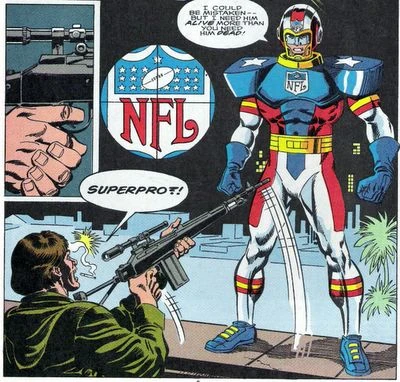
Ironically, in the modern era of superhero media saturation and constant cross-branding, NFL SuperPro almost feels ahead of his time. The difference, of course, is that Marvel now has the resources and talent to make such tie-ins at least competent, if not successful. Imagine a satirical Deadpool-style take on the character today — it might just work, but only because fans now expect meta-commentary and self-aware humor. In the ’90s, there was no irony — just bad comics.
NFL SuperPro remains one of the strangest, most misguided characters Marvel ever put to print. His brief, 12-issue run was a testament to the dangers of merging marketing with storytelling without any regard for quality or originality. He wasn’t cool, he wasn’t funny, and he wasn’t interesting — but he was real, and that’s what makes him unforgettable in his own way.
So here’s to NFL SuperPro: the hero we didn’t need, never asked for, and thankfully never got again.

